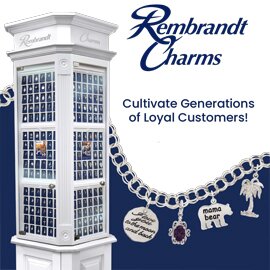There is a lot of confusion over how businesses should use the Internet today. Even though Internet technology evolves every day, many people still believe what they originally learned ten or more years ago. Today, I'll share a few of the most underutilized features that websites should have, along with consumer engagement strategies and the current state of SEO.
1. Mobile Websites
In May 2015, Google reported that more than 50% of search traffic was taking place through smartphones. Then in May 2016, Hitwise reported their study showed mobile traffic had reached 60%. A peek into your own Google Analytics and you'll likely find mobile users to be more than 45% of your traffic.
Smartphone usage continues to grow every day and consumers expect you to have a mobile website so they can find information about you easily. If your website isn't easy to use on a smartphone, then talk to your web developer and implement a mobile strategy as soon as you can.
2. Website Abandonment & Freshness
Website abandonment refers to websites that were set up then quickly forgotten. Sometimes abandonment happens because the business owner just wanted something online to represent the business and sometimes it happens because the cost and maintenance of the website was greater than initially expected.
Google Search Quality Guidelines (found here: bit.ly/qual2017) explain how important it is for your website to be updated often, especially updating your product information. Fresh content usually refers to new blog posts and changes to your home page, but for retail stores it also refers to regular updating and adding of new products in your catalog.
Websites are an important way for businesses to provide online credibility, even if you can't afford to maintain it. Just know that it will help your business more if you keep it fresh.
3. Internal Linking
Internal linking refers to how you link from one page to another from within the body of the page. I'm not referring to top, side, or footer navigation, but the random links within your written paragraphs. This type of linking allows users to jump from page to page on your site in a way that makes sense while they read it. It's a better way of helping people discover information where and when it's needed, rather than having them systematically click through every page in your navigation.
Internal linking also helps search engines find information on your site. It's faster for search engines to discover fresh updates when you link to it in your body content. For example, a new product blog posts with internal links to the catalog will help Google discover your fresh content faster.
4. Online Catalog
Product catalogs are paramount for physical retail stores. Smartphone users know they can save time by browsing online catalogs than visiting many stores in person. They save a lot of time making their selection before leaving their house. This is also why it's important to have an accurate representation of your store inventory online. I recommend that you tie your in-house product management system to your website inventory. Your website doesn't need e-commerce but it does need a mobile-friendly version of your entire catalog.
5. Online Engagement
Google recently changed the way it manages information shared by consumers. More emphasis is being given to photos, reviews, and comments uploaded by consumers. There is a de-emphasis in what business owners say about themselves. Your business will grow in online popularity as more people mention you on social networks, in Google services, and in various review websites. Each of these activities is a different type of engagement that Google may use to help it understand who you are and what you do.
Paying a company to post to social media every day is not considered online engagement. Engagement only happens if you monitor and reply to customers who ask questions about what you post. Other than social networks, you can also improve your online engagement by asking your in-store customers to write reviews about you online. Make sure to reply to each review, even if it's just to say thank you.
Invite customers to take and share photos of the jewelry they try on in your store. Sharing photos to one of Google's services would be ideal, but sharing photos to any social network will help expand your online reach as Google and other people see a mention of your store name.
Lastly, allow customers to leave testimonials and product reviews right on your website. This is direct consumer engagement that will certainly help.
6. The New SEO
Each of the above 5 items relates to search engine optimization (SEO) in one way or another. SEO is no longer a service that you can simply pay for without actively participating in it. Prior to 2012, SEO was all about keyword tweaking, article spinning, and several other scientific and mathematical methods of modifying a website to exploit ineficiencies in Google's ranking algorithm. That doesn't work anymore.
The Google Search Quality Guidelines I mentioned above explain that good content, new content, appropriate information, and good customer experience are important elements in ranking your website now. Keywords are not the focus anymore which means the SEO process is less mathematical and more related to how you interact with customers online.
You can improve your website and online engagement by reading online reviews about you and studying your website reports. Eventually you'll realize that improving customer experience and online engagement is the new version of SEO.


